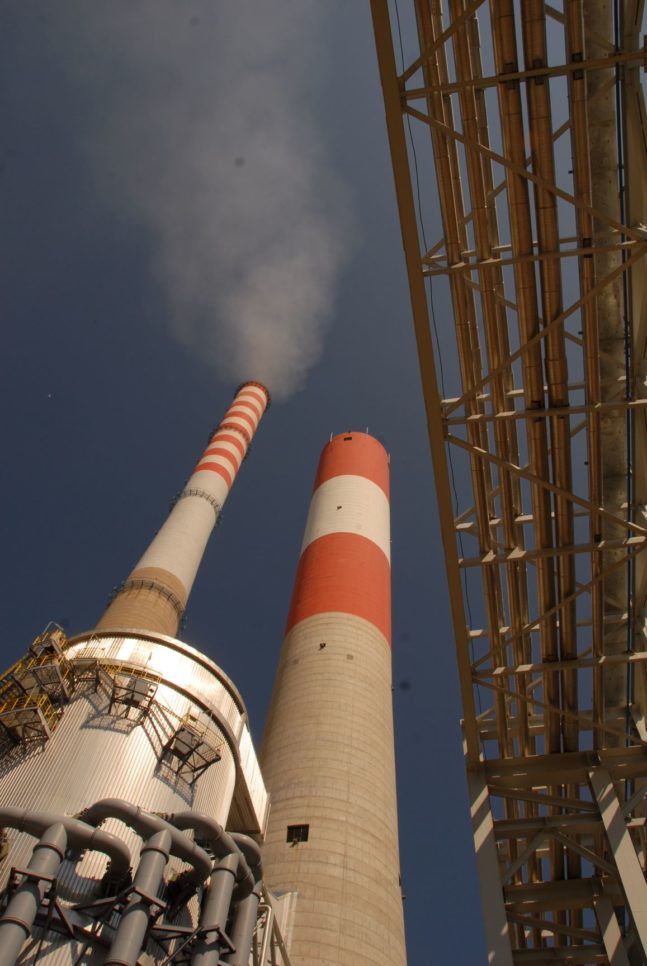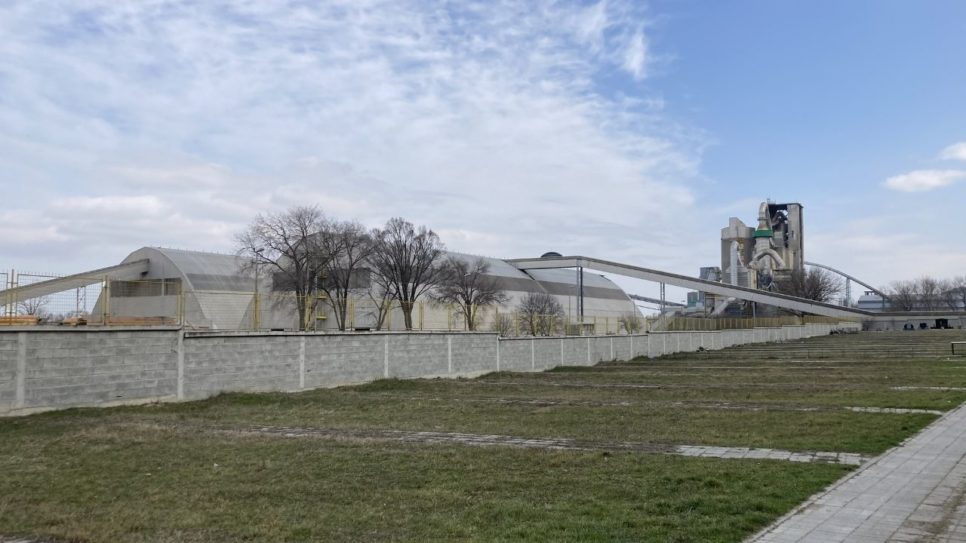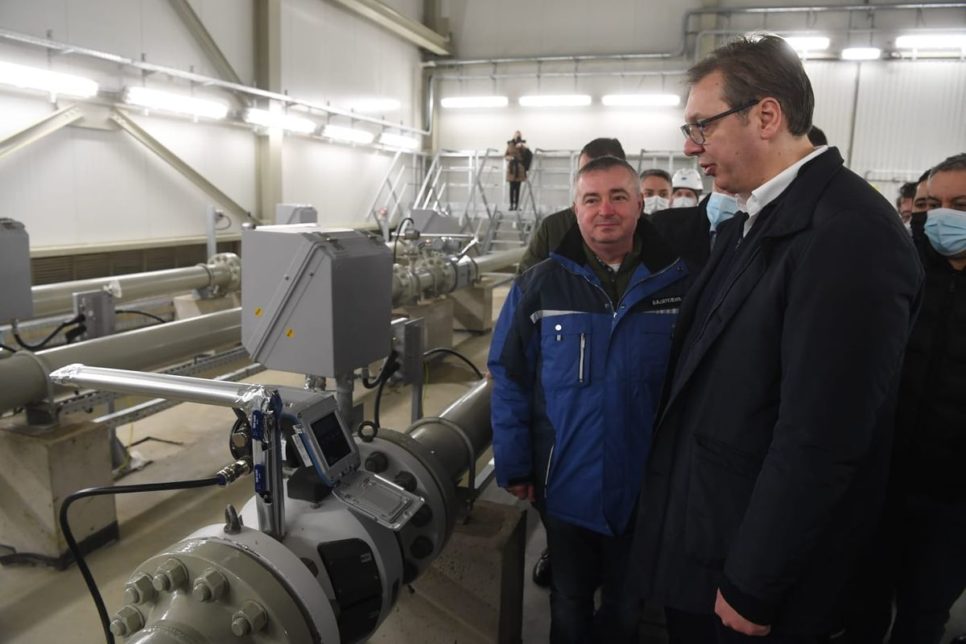The village of Radinac next to Smederevo’s Železara steel mill is not a good place to live this year. Out of the six and a half months during which pollution was measured until September, almost three and a half months were dangerous for human health. There were days when the particulate matter which damages the heart and lungs, the so-called PM10 particles, reached levels up to seven times higher than permitted.
These are the official data of the Serbian Environmental Protection Agency (SEPA) which the Center for Investigative Journalism of Serbia (CINS) obtained by sending FOIA requests, which SEPA plans to publish no sooner than in its air quality report in 2021.
The villagers have for years been suspecting that the air in the village is not good, but have no proof because from 2013 to the end of last year SEPA did not monitor pollution in Radinac. Since then, it has been taking samples at a gravimetric station which it then analyzes in a laboratory, so real-time monitoring of how bad the air is, like with automatic stations, is not possible.
“No one publicizes information,” complains Tomislav Cvijetić from Radinac, who says that no one is doing anything about the pollution even after protests and a petition in Smederevo.
The situation is similar at the Carina location, near the center of Smederevo, where bad air was registered on one in three days, on average, in the first nine months of 2020, according to SEPA data.
Andrej Šoštarić, the responsible analyst at the Laboratory for Air Quality of the Belgrade City Institute of Public Health, told CINS that it was important for people to know how polluted the air was so that they could adapt their behavior to current conditions:
“First and foremost, to know if it is polluted or very polluted, whether they will go for a walk, whether they will go jogging or if they can postpone some of their activities so as to be less exposed to that air. (…) Like when you see whether the temperature is 10 or 20 degrees and prepare your outfit accordingly or say ‘I won’t go for a walk if it’s -4’.”
However, no station near the steel mill, which pollutes the air primarily with PM10 particles, is automatic and so citizens do not know what kind of air they are breathing at any moment. Thus, south of the factory, in the villages of Vranovo and Ralja, the City of Smederevo monitors pollution and posts the results once a month on the city website. Only the station in downtown Smederevo, some ten kilometers from the polluter, shows suspended particles in real time.
The problem with this harmful matter is not monitored in real time in other most polluted places either – in Kostolac, Zaječar, Kraljevo, Kragujevac, or in Bor and Novi Sad, which have only one station each that performs real-time monitoring of PM concentrations.

Besides state-owned stations, local self-government units monitor air pollution usually by hiring public health institutes to analyze the air. Although local measurements in some places point to problems that pose a health threat, that is often left under the radar of the official PM pollution statistics – the biggest problem of bad air in the country, shows the analysis conducted by CINS.
From 2015 to the end of 2017, Smederevo was officially unrated due to problems in the operation of state stations – based on which SEPA assesses air quality. During that time, in the Smederevo village of Ralja and in downtown Smederevo PM particles exceeded permitted limits, according to local measurements.
The situation was similar with the officially unpolluted Bor in 2018, when local monitoring performed by the Mining and Metallurgy Institute showed excessive concentrations of PM10, but also of sulfur dioxide (SO2). The following year Bor had extreme SO2 pollution and was dangerous for human health, while officially there was no problem with PM10.
In Ćuprija, Čačak, Čoka, Veliki Crljeni excessive PM10 levels were last year registered only by the local public health institutes, because SEPA’s stations did not monitor these particles. Residents could learn that PM10 levels were overly high for 150 days last year in Veliki Crljeni, a suburban settlement near Lazarevac, no earlier than in August this year, through data provided by the Institute of Public Health of Serbia Dr Milan Jovanović Batut. Today this station is on the SEPA website.
In the maze of local and state monitoring, certain cities and towns have no information on harmful pollution with suspended particles. In 2019, no one measured PM10 levels in Vranje, Kruševac, Leskovac, and Trstenik. The list of cities and towns where levels of the even more dangerous PM2.5 particles are not monitored is conspicuously longer.
Kragujevac however, despite monitoring conducted by SEPA and the local institute, did not have sufficient valid data and so on paper the city remained pollution-free.
Ognjan Pantić of the Belgrade Open School believes that it is best for monitoring to be continuous, because “only in that way can the actual effects of air pollution on public health be monitored.”
If the scope of that monitoring at the level of the state is not enough, then it is important to rely on the local one, explains Pantić. Especially since it could happen that there are several stations in a city or town and one station did not register the excessive level while another did, then it is important that those excessive concentrations were registered somewhere, he adds.
Local Monitoring Which Is Taken into Account
Some local monitoring is included in SEPA’s official PM pollution statistics. In 2019, data from local stations in seven places were used, even though, according to Batut data, PM levels had been monitored in 26 cities, towns and settlements.
In the conclusion of its 2019 air quality report, Batut says that this is not enough, which makes a broader analysis of the risk to human health in the country difficult. Batut also voices criticism of the fact that in some places monitoring was not carried out for a sufficient number of days. Improving the situation requires more money, reads Batut’s conclusion, and so funds for air pollution monitoring should be provided at the level of local self-government units.
Nonetheless, a look at even such a small analysis reveals a rise in PM concentrations in the country. Thanks only to local measurements which showed that air quality was bad, Kraljevo, Požarevac and Subotica in 2019 ended up among places polluted with PM10 particles, while Pančevo, Kraljevo and Subotica were polluted with PM2.5 particles.
Ognjan Pantić of the Belgrade Open School thinks there is not enough monitoring because tenders for this service are not called on time.
In its 2019 report Batut also states that there should be tighter cooperation in air quality monitoring between SEPA and Batut, “as two key institutions which take care of the status of the environment and health in the state:”
Insufficient pollution monitoring in Belgrade
Last year’s data from the monitoring stations of the Belgrade City Institute of Public Health were published by Batut. They show that at most locations in the capital PM pollution was measured on average for a month and a half during the year, which is considered a poor sample and insufficient monitoring.
Andrej Šoštarić, the responsible analyst at the institute’s Laboratory for Air Quality, says that monitoring depends primarily on the city budget:
“Some practical compromise has to be made there. First and foremost it depends on the budget. (...) That is the optimal program we can carry out with our capacities within the designated budget and everything we have at our disposal – manpower, vehicles, that all has to be toured, laboratory capacities.”
Since November 18, the SEPA website is again presenting the automatic monitoring of these particles from the stations under the care of the Belgrade Institute, which are part of the state network.
“An aspect of this cooperation pertains to the conformity of justifiability for the selection or elimination of certain monitoring locations and the parameters monitored at the same, all for the purpose of more rational use of available resources and technical capacities.”
On the other hand, SEPA says in its report that improving the existing air quality monitoring in the state network will not lead to a reduction in air pollution, but rather that it requires adequate measures that would have an effect on those who pollute. CINS reported earlier that pollution is not solved at the local level either.
SEPA did not answer CINS’ questions by the time this article was published, including why only a portion of the data from local monitoring is added to the official air quality assessment and why it did not install automatic PM monitoring stations in all places where it monitors air quality.





What do you think